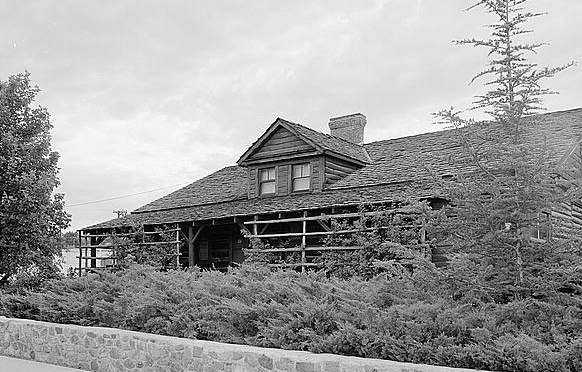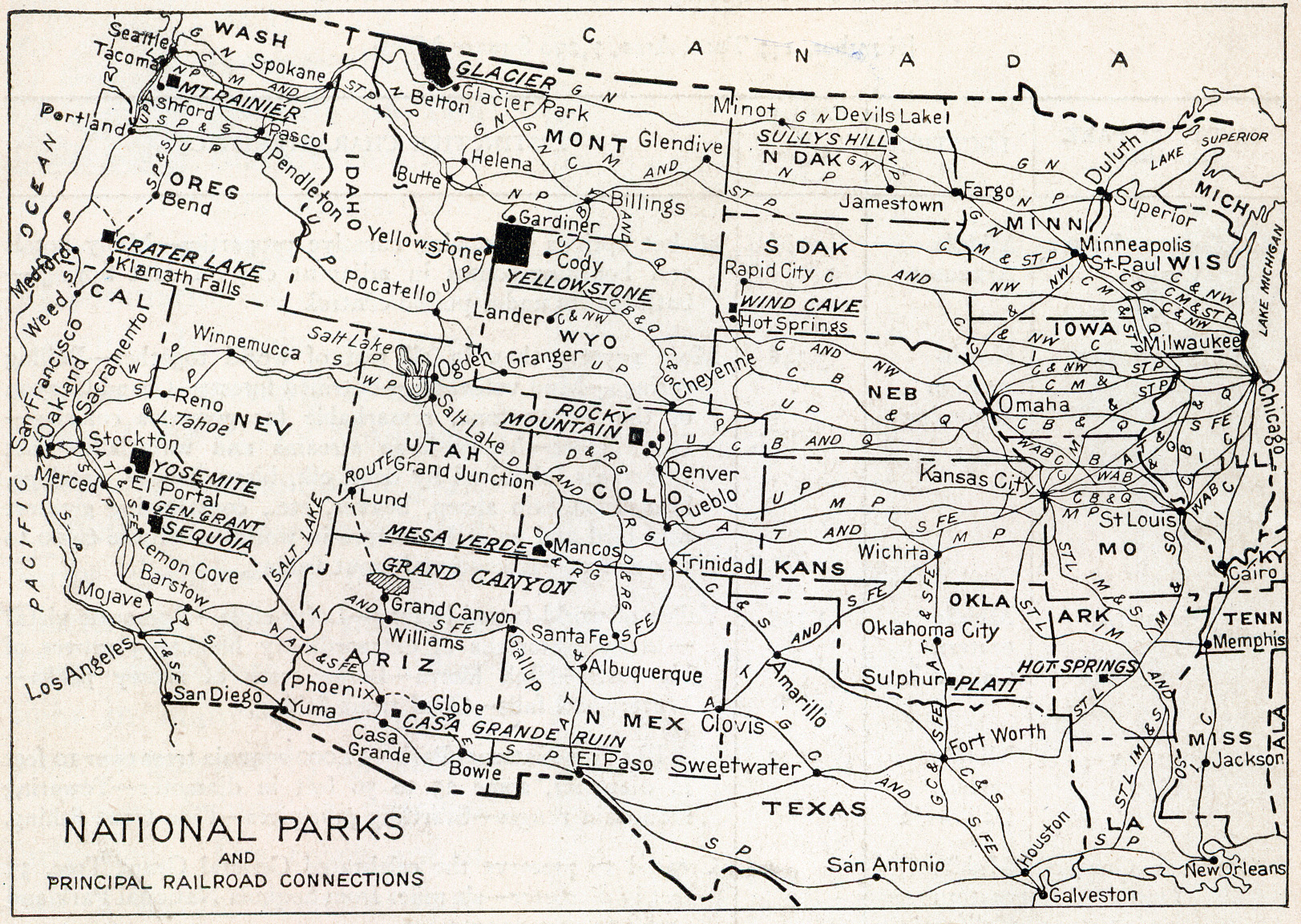|
Carnegie Library (Prescott, Arizona)
Prescott, Arizona, founded in 1864, soon had a children's library that was a collection of books gathered by several women. A Prescott Library Association opened a public reading room space in 1870. But there was no regularly funded library until the Carnegie library (a free public library) at 125 E. Gurley Street was built in 1903. Its funding and construction was a project of the Monday Literary Society or Monday Club, a group formed in 1895 (as the Women's Club of Prescott), a group of women dedicated to the educational and cultural well-being of their community. It has also been known as Prescott Public Library and is listed on the National Register of Historic Places under that name. The replacement library, the current Prescott Public Library, built in 1974, is two blocks away. History The Monday Club requested matching funds from Andrew Carnegie to build the library. The goal was to create a ‘free public library’ for the Prescott community. In July 1889, Carne ... [...More Info...] [...Related Items...] OR: [Wikipedia] [Google] [Baidu] |
Prescott, Arizona
Prescott ( ) is a city in Yavapai County, Arizona, Yavapai County, Arizona, United States. According to the 2020 United States census, 2020 Census, the city's population was 45,827. The city is the county seat of Yavapai County. In 1864, Prescott was designated as the capital of the Arizona Territory, replacing the temporary capital of Fort Whipple, Arizona, Fort Whipple. The Territorial Capital was moved to Tucson, Arizona, Tucson in 1867. Prescott again became the Territorial Capital in 1877, until Phoenix, Arizona, Phoenix became the capital in 1889. Prescott has a rich history as a frontier gold and silver mining town. Mining and settlers brought frequent conflict with native American tribes in the area, including the Yavapai and Apache. Prescott was the home to Fort Whipple, Arizona, Fort Whipple from its inception, which acted as a base for campaigns against natives. Prescott was a stereotypical "wild west" town during the latter half of the 19th century; famous residents ... [...More Info...] [...Related Items...] OR: [Wikipedia] [Google] [Baidu] |
National Register Of Historic Places
The National Register of Historic Places (NRHP) is the United States federal government's official list of districts, sites, buildings, structures and objects deemed worthy of preservation for their historical significance or "great artistic value". A property listed in the National Register, or located within a National Register Historic District, may qualify for tax incentives derived from the total value of expenses incurred in preserving the property. The passage of the National Historic Preservation Act (NHPA) in 1966 established the National Register and the process for adding properties to it. Of the more than one and a half million properties on the National Register, 95,000 are listed individually. The remainder are contributing resources within historic districts. For most of its history, the National Register has been administered by the National Park Service (NPS), an agency within the U.S. Department of the Interior. Its goals are to help property owners a ... [...More Info...] [...Related Items...] OR: [Wikipedia] [Google] [Baidu] |
Prescott Public Library
The Prescott Public Library is the public library in Prescott, Arizona. The original Prescott Public Library was a Carnegie library at 125 E. Gurley Street, which is now an office building. It was the first Carnegie library in Arizona. This building was listed on the U.S. National Register of Historic Places in 1975. with The current library location at 215 E. Goodwin Street was built in 1974 and renovated in 2006. The library sees nearly half a million visitors a year. Modern library The current library, built in 1974, is part of the Yavapai Library Network. The library has a vast collection of books, audiobooks on CD, magazines, DVDs, CDs and video games, as well as e-books, e-magazines and downloadable audiobooks. The library also contains other services such as computers, printers, scanners, and fax machines. The library is decorated with murals depicting Prescott's history that were completed in 2009. In 2014, working in conjunction with the Tribute Fence Preservatio ... [...More Info...] [...Related Items...] OR: [Wikipedia] [Google] [Baidu] |
Andrew Carnegie
Andrew Carnegie (, ; November 25, 1835August 11, 1919) was a Scottish-American industrialist and philanthropist. Carnegie led the expansion of the American steel industry in the late 19th century and became one of the richest Americans in history. He became a leading philanthropist in the United States, Great Britain, and the British Empire. During the last 18 years of his life, he gave away around $350 million (roughly $ billion in ), almost 90 percent of his fortune, to charities, foundations and universities. His 1889 article proclaiming "The Gospel of Wealth" called on the rich to use their wealth to improve society, expressed support for progressive taxation and an estate tax, and stimulated a wave of philanthropy. Carnegie was born in Dunfermline, Scotland, and emigrated to Pittsburgh with his parents in 1848 at age 12. Carnegie started work as a telegrapher, and by the 1860s had investments in railroads, railroad sleeping cars, bridges, and oil derricks. He a ... [...More Info...] [...Related Items...] OR: [Wikipedia] [Google] [Baidu] |
National Park Service
The National Park Service (NPS) is an List of federal agencies in the United States, agency of the Federal government of the United States, United States federal government within the United States Department of the Interior, U.S. Department of the Interior that manages all List of areas in the United States National Park System, national parks, most National monument (United States), national monuments, and other natural, historical, and recreational properties with various title designations. The United States Congress, U.S. Congress created the agency on August 25, 1916, through the National Park Service Organic Act. It is headquartered in Washington, D.C., within the main headquarters of the Department of the Interior. The NPS employs approximately 20,000 people in 423 individual units covering over 85 million acres in List of states and territories of the United States, all 50 states, the Washington, D.C., District of Columbia, and Territories of the United States, US territ ... [...More Info...] [...Related Items...] OR: [Wikipedia] [Google] [Baidu] |
Free Library Project
The Library Freedom Project teaches librarians about surveillance threats, privacy rights, and digital tools to thwart surveillance. In 2015 the Project began an endeavour to place relays and, particularly, exit nodes of the Tor anonymity network in public libraries. Tor Exit Relay Project Its pilot project enabled the Kilton Public Library in Lebanon, New Hampshire to become in July 2015 the first library in the United States to host Tor, running a middle relay on its excess bandwidth. This service was put on hold in early September, however, when the library was visited by the local police department after they had received a "heads up" e-mail from Department of Homeland Security highlighting the criminal uses of the Tor network (and which falsely claimed that this was the network's primary usage), whereupon the library began reconsidering the deployment from a public relations perspective. After an outpouring of support from the Electronic Frontier Foundation, the Massachusett ... [...More Info...] [...Related Items...] OR: [Wikipedia] [Google] [Baidu] |
Buildings And Structures In Prescott, Arizona
A building, or edifice, is an enclosed structure with a roof and walls standing more or less permanently in one place, such as a house or factory (although there's also portable buildings). Buildings come in a variety of sizes, shapes, and functions, and have been adapted throughout history for a wide number of factors, from building materials available, to weather conditions, land prices, ground conditions, specific uses, prestige, and aesthetic reasons. To better understand the term ''building'' compare the list of nonbuilding structures. Buildings serve several societal needs – primarily as shelter from weather, security, living space, privacy, to store belongings, and to comfortably live and work. A building as a shelter represents a physical division of the human habitat (a place of comfort and safety) and the ''outside'' (a place that at times may be harsh and harmful). Ever since the first cave paintings, buildings have also become objects or canvasses of much artist ... [...More Info...] [...Related Items...] OR: [Wikipedia] [Google] [Baidu] |





